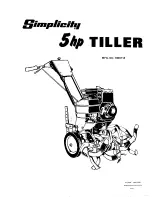
3
Chillers with an integral water-cooled or air-cooled
condenser ship with a full refrigerant charge. Chillers
designed for use with a remote air-cooled condenser
and the remote condensers themselves ship with a
nitrogen holding charge. Check the remote
condenser for signs of leaks prior to rigging. This will
ensure no coil damage has occurred after the unit
left the factory. The condenser ships with the legs
removed. Mount the legs to the condenser using the
provided nuts, bolts, and washers.
Unit Storage
If the chiller is stored prior to installation, it is
important to protect it from damage. Blow out any
water from the evaporator and water-cooled
condenser circuits to protect the unit from damage
from freezing. Close any open refrigerant valves.
Cover the equipment to keep dirt and debris from
accumulating on it. Units charged with refrigerant
should not be stored in areas warmer than 145°F.
Installation - Chiller
Foundation
Install the chiller on a rigid, non-warping mounting
pad, concrete foundation, or level floor suitable to
support the full operating weight of the equipment.
When installed the equipment must be level within
¼ inch over its length and width.
Unit Location
The chiller is available in many different
configurations for various environments. Refer to the
proposal and order acknowledgement document for
the equipment to verify the specific design
conditions in which it can operate.
Allow a minimum of 48 inches of clearance between
the chiller and any walls or obstructions. For
installations with multiple chillers, allow a minimum
of 96 inches between chillers placed side-by-side or
48 inches for chillers placed end-to-end.
When locating the chiller it is important to consider
accessibility to the components to allow for proper
maintenance and servicing of the unit. In general,
allow a minimum of 36 inches of clearance around
and above the unit. Avoid locating piping or conduit
over the unit to ensure easy access with an overhead
crane or lift to lift out heavier components during
replacement or service.
Proper ventilation is another important
consideration when locating the chiller. In general,
locate the unit in an area that will not rise above
110°F. In addition, ensure the condenser and
evaporator refrigerant pressure relief valves can vent
in accordance with all local and national codes.
Chillers with an integral air-cooled condenser require
a minimum of 36 inches of clearance at both the
condenser air inlet and condenser air discharge, they
are not, as standard, designed to have the condenser
air discharge ducted. Improper clearance or poor
ventilation will reduce the cooling capacity of the
chiller and may cause high refrigerant pressure
problems. In order to avoid possible low refrigerant
pressure safety trips during start-up, maintain the
inlet air temperature above 50°F. If outside air is
ducted into an indoor chiller with an integral air-
cooled condenser, there is an option for low ambient
heat pressure controls which allow for incoming air
temperatures down to 0°F. Cooler temperatures than
this require custom modifications.
Rigging
The chiller has a frame to facilitate easy movement
and positioning with a crane or forklift. Follow
proper rigging methods to prevent damage to
components. Avoid impact loading caused by
sudden jerking when lifting or lowering the chiller.
Use pads where abrasive surface contact may occur.
Chilled Process Fluid Piping
Proper insulation of chilled process fluid piping is
crucial to prevent condensation. The formation of
condensation adds a substantial heat load to the
chiller.
The importance of properly sized piping between
the chiller and process cannot be overemphasized.
See the ASHRAE Handbook or other suitable design
guide for proper pipe sizing. In general, run full size
piping out to the process and reduce pipe size at
connections as needed. One of the most common
causes of unsatisfactory chiller performance is poor
piping system design. Avoid long lengths of hoses,
quick disconnect fittings, and manifolds wherever
possible as they offer high resistance to water flow.
When manifolds are required, install them as close to
the use point as possible. Provide flow-balancing
valves at each machine to assure adequate water
distribution in the entire system. Typically, when
Содержание Accuchiller EQ Series
Страница 1: ...Installation Operation Manual EQ Series Portable and Remote Condenser Chillers ...
Страница 2: ...Page Intentionally Blank ...
Страница 4: ...Page Intentionally Blank ...
Страница 27: ...Notes ...








































